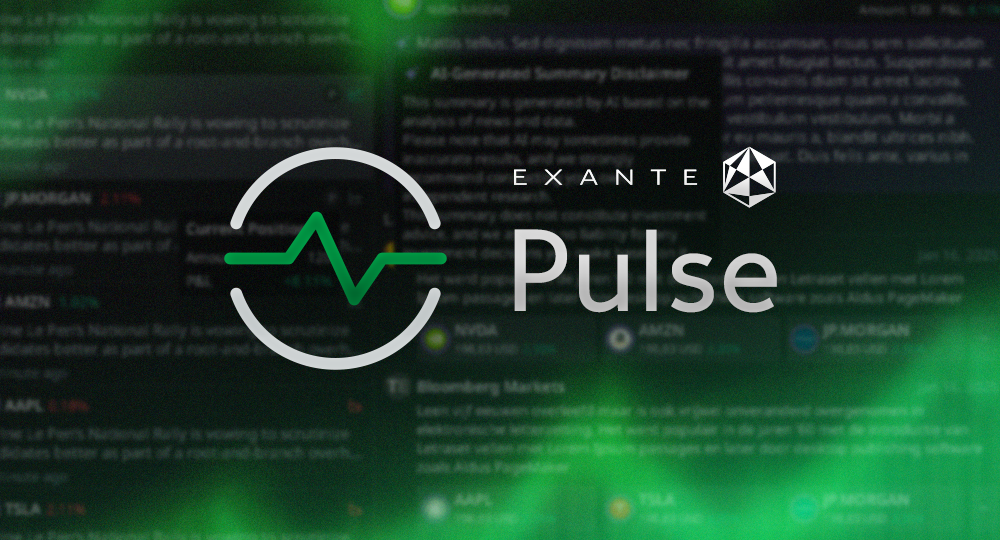By Renée Friedman, PhD
Welcome to the 2nd in our Macro insights series. Over the last week, global equities markets have jumped from multi-month lows to dig back some ground; US treasury yields reached highs not seen in years as a drop in jobless claims suggested further labour market tightening thus solidifying the taper prospect; energy prices continued to surge following the decision by the OPEC+ group not to increase production heading into winter and gas prices also continued to rocket upwards due to low inventories in Europe, infrastructure redevelopment, and rising demand in Asia, despite Russia’s promise to meet its commitments in exchange for support to Nord Stream 2.
In short, the week leaves investors faced with a multitude of macro-economic uncertainties including an ever more likely and faster taper from the Fed, to uncertainty around China’s about face on funding dirty energy (coal) to its ability to keep injecting cash into a jittery post Evergrande market to the continuing supply chain bottlenecks and labour shortages that are stoking inflation. No wonder, as represented by a relatively high VIX, there is so much confusion about the market’s future direction.

Things to look out for this coming week:
- In Europe on Tuesday we’ll be looking forward to Economic sentiment data while on Wednesday Industrial production data will give further insight into whether or not the ECB will be willing to consider a rise sooner rather than later. Poor growth will depress the Euro and make investors more nervous about stagflation.
- In the UK on Friday look forward to the Bank of England Quarterly Bulletin for Q3 which will give a view on market developments and possible policy scenarios in the UK and internationally. On Tuesday at 07:00 watch the ILO unemployment rate data for August and claimant count data to provide further indications of possible wage inflation. On Wednesday it will become clearer if the UK is headed on a possible short term stagflationary path as GDP m/o/m and manufacturing y/o/y data will be released.
- In the US on Friday we, the Fed and the rest of the world will be focused on US nonfarm payrolls, labour force participation rates and the unemployment rate. On Wednesday the inflation rate (y/o/y) data will be revealed. These two items will determine the speed at which the inevitable taper begins. On Friday look out for initial jobless data and the Producer Price Index, which measures inflation from the perspective of costs to industry or producers of products. It may give an indication of just how transitory inflation will be if producer costs continue to rise due to raw material shortages or other supply bottlenecks.
The fear of stagflation may herald the return of industrial policy
Governments, central banks, investors, and households have all zoomed in on the question of rising inflation with cries of possible stagnation if rates rise and fiscal stimulus stops while economies are still trying to recover from Covid. The discussion about inflation must also include a discussion about productivity growth, the ability to produce the same or more with fewer inputs. Labour productivity growth is the key determinant of how demand can grow without inflation. If productivity accelerates, unit labour costs should remain stable and so should prices. But Europe and the UK, and to a lesser extent the US, have a problem with productivity growth; it doesn’t happen in all sectors of the economy equally. According to a March 2021 McKinsey Global Institute report, “60 percent of the productivity potential could come from action to improve efficiency through, for instance, accelerated digitisation and automation. Absent action, the risk is rising inequality and unemployment, undermining demand just when it is needed most and putting the prize of a productivity dividend in doubt.”
This means more people, particularly those in sectors that are more easily automated and/or lack strong digital skills, will fall further behind in terms of income levels as well as asset accumulation, even if their wages had started to rise due to changes in the minimum wage. The long term consequences of this are clear, at least when it comes to politics; more inequality will lead to more extreme domestic political parties coming to power with all the consequent effects for fiscal policy, debt levels, bond yields, and currency values. It would also create more fertile ground for labour strikes, pile on more regulatory and investor pressure on larger companies and also hit the SME sector, the backbone of most economies, hardest. What companies learned from Covid is that reputational risk matters, especially in regions where policy makers, regulators and investors are increasingly focused on perceived sustainability, materiality and social responsibility.
Why Biden and Boris aren’t necessarily bonkers
Although the past 18 months of Covid have undoubtedly accelerated corporate investment in automation, the digitalisation of product offerings and research necessary for technological innovation, the full effects on the economy as a whole in terms of enhanced productivity growth will take time to filter through as furloughs end, subsidies to SMEs are removed, and people, who may have been putting in more hours at home than their bosses knew, move back to the office. Labour shortages and slower growth may not prove not to be so short term if skills shortages have indeed become a structural problem, unrelated to short-term economic swings.
The long-run impact of the Covid shock on the productive potential of the economy is what is now affecting policy statements and choices; UK Prime Minister Boris Johnson’s rebuke to business on their dependence on low skilled labour and his promise to raise the minimum wage, the Eurozone’s €806bn Next Generation EU Fund with its longer term goals of making Europe greener, more digital, more resilient, and the Biden administration still trying to pass its $3.5tn infrastructure and investment bill all point to one thing: governments are aware of the inequality backlash that may occur if they do not embrace ways to improve productivity growth across virtually all sectors of the economy and the improvements in incomes and life outcomes that come with that. It is still not clear whether that increased investment to improve the chances of a cross-economy “levelling-up” will come from state intervention through an enhanced industrial policy strategy or through new regulatory requirements that put the onus on business. What is clear is that both options will probably be up for discussion behind closed doors.
Questo articolo viene fornito all'utente soltanto a scopo informativo e non deve essere considerato come un'offerta o una sollecitazione di un'offerta di acquisto o di vendita di investimenti o servizi correlati che possono essere qui menzionati.






